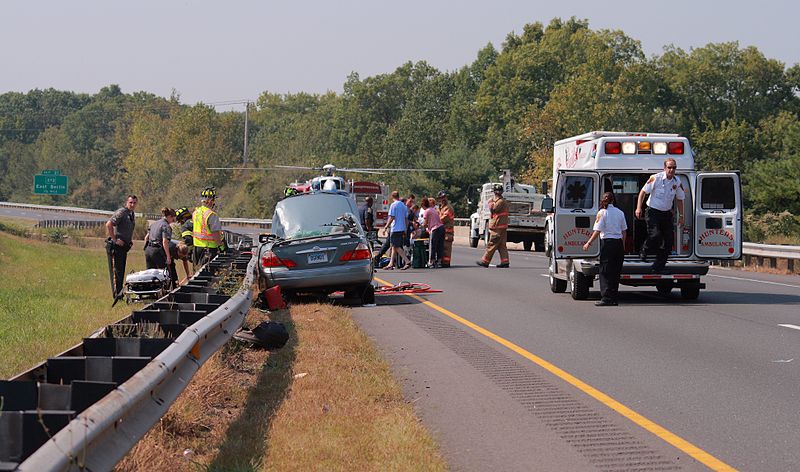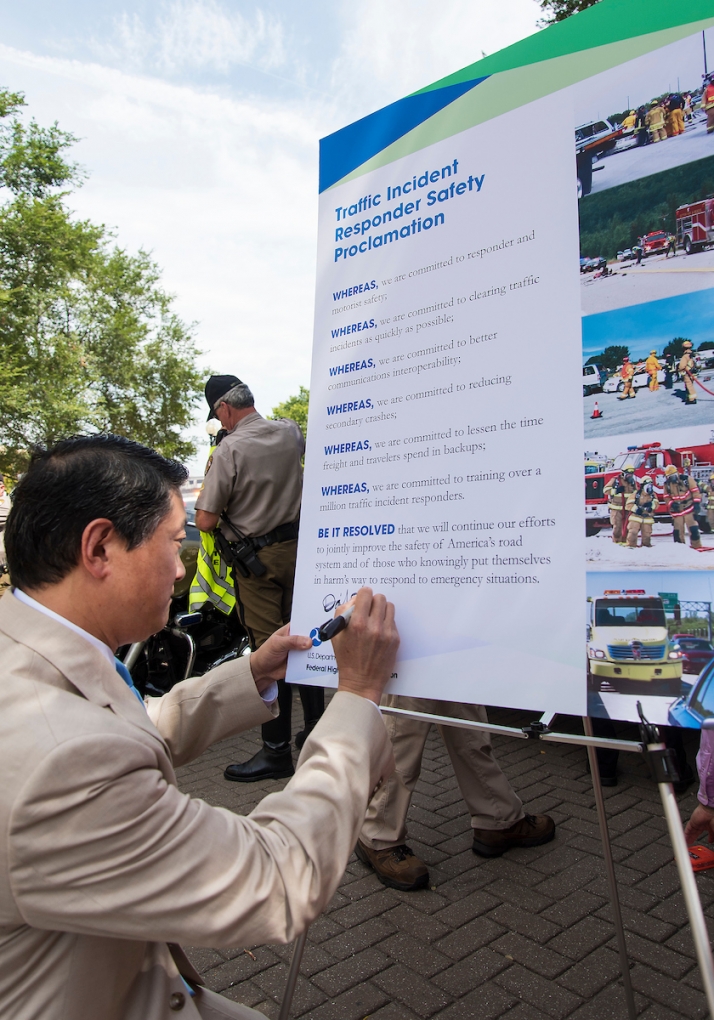David S. Kim, Deputy Federal Highway Administrator
Emergency responders understand the importance of safety better than anyone else. They face life and death situations every day when they go to work – at the scene of a crash, where they rescue victims and protect others.
Each year, an estimated 100 emergency responders are killed in the line of duty. That’s why the Federal Highway Administration (FHWA), in partnership with the responder community, developed the Traffic Incident Management – or “TIM” – Responder Training.

This life-saving training is part of a national effort to improve the safety of first responders and others on the scene of highway crashes.
And it’s great news that, as of this week, 200,000 responders nationwide have completed the training. These trained professionals represent all 50 states, the District of Columbia and Puerto Rico.
There remains much yet to do to reach our goal of training one million responders, but this is definitely a milestone. Yesterday, I and other transportation safety professionals signed a proclamation to underscore our ongoing commitment to meeting that goal.
FHWA’s training course is designed by and for responders, and helps to build teams of well-trained police, firefighters, highway workers, and emergency medical and towing personnel.
Together, they learn a common set of practices, including techniques to quickly and safety clear a crash scene, which improves communications and reduces the amount of time needed to remain on scene. This is imperative, since responders risk being struck by other drivers while working on or near the roadway.
The longer these professionals stay at the scene, helping others, the greater the risk they face and the greater the risk to the traveling public of another crash.
In addition to preventing secondary crashes, which significantly decreases highway safety for everyone on the road, it also limits freight movement and increases worker commute times; we want to keep traffic moving safely for other drivers on the roadway.
We are helping emergency responders learn safer practices at highway accident scenes. Besides protecting emergency workers and ensuring crash victims receive immediate attention, these practices will reduce the number of crashes and their victims, and prevent tie-ups by keeping traffic moving for all of America’s drivers.
Nationally, August is among the months when traffic is at its highest point. With more drivers on the roads, we can’t emphasize more strenuously how important it is for drivers to travel with caution.
And for those first responders who are on the scene of a crash, helping victims, thank you for the job you do and the risks you take. At DOT, we’re dedicated to making your crucial role as safe as possible.

